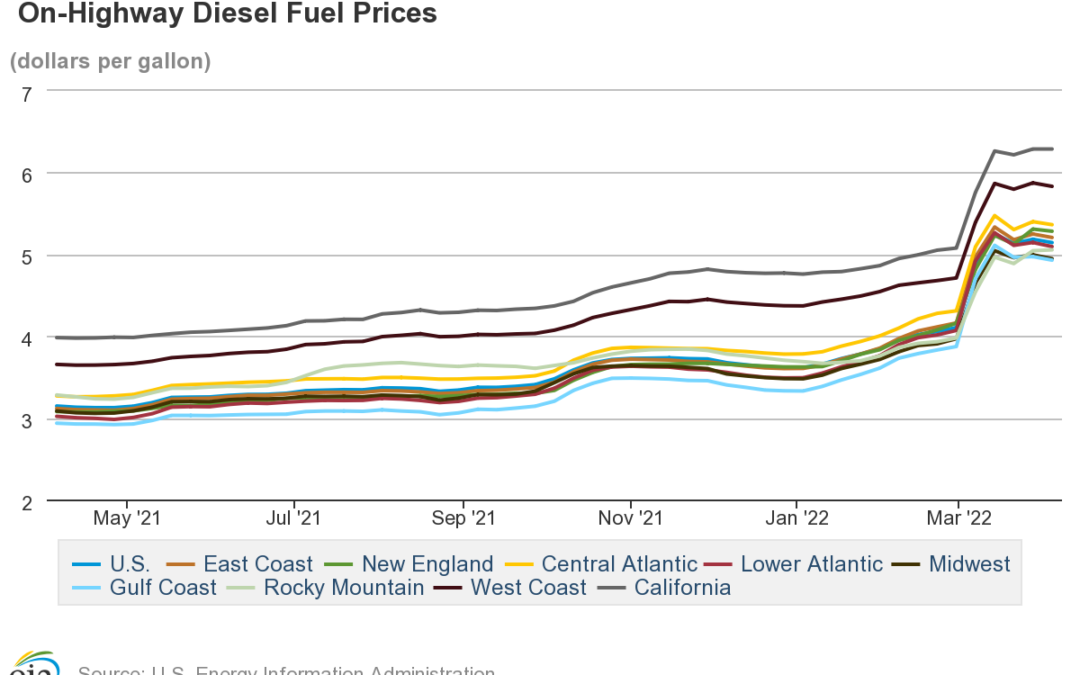Curb the increase with better phosphorus removal management
It has been a record setting two years, two years of changes and stresses. Your communities have felt it. Your water and wastewater utilities have felt it. Many of you have been part of monitoring for COVID by monitoring your wastewater. So, it is understandable that, after the last two years, you (as all of us) are ready to get back to some normalcy.
Normalcy, it was not to be – not just yet
The transition into 2022 has been anything but smooth: a huge COVID spike in December and January, supply chain issues that pushed scheduled maintenance behind schedule, and trucking prices driven by high inflation. Toss in a war in Europe for good measure, and suddenly fuel prices go through the roof. These rising fuel prices can have a big impact on your sludge disposal.
Is it time to evaluate ways to reduce the number of loads you need to haul away?
You can’t always control fuel, labor, or trucking costs. But, if you remove phosphorus from the wastewater with a coagulant, there is probably a LOT you can do to reduce the number of loads of sludge you haul to a landfill.
Switching to Neo WaterFX will not only provide reliable phosphorus removal, even to very low limits of less than 0.1 mg/L, but will reduce the amount of sludge requiring disposal through three different mechanisms:
- Less chemical sludge production: The lanthanides in WaterFX are selective for phosphorus, reacting in a near 1:1 molar ratio. Compared with the 4:1 up to 8:1 molar ratio of aluminum or iron required to get the equivalent phosphorus removal, it is easy to see that there is much less chemical sludge produced. Less sludge, less requiring disposal.
- Dense crystal vs fluffy floc: WaterFX forms a dense crystal precipitate that settles well. Compare that with the fluffy floc formed by traditional coagulants, which Metcalf and Eddy refer to as a “bulky, gelatinous floc,” and you can see that a dense crystal has substantially less volume, requiring fewer truckloads.
- Better dewatering: The sludge produced by WaterFX dewaters easier, requires less polymer (so less additional weight) and produces a sludge with less bound water that dewaters to a higher solids percentage. Less water, less bulk, less weight, and fewer loads.
With all three factors combined, your sludge loads can be reduced significantly. Some utilities have seen a reduction by a third or more of their total loads, just from making the switch.
Unlike diesel prices, your rates are fixed, or at least harder to increase.
Fewer sludge loads are good news because fuel costs, and corresponding trucking costs, are rising rapidly. Data from the U.S. Energy Information Administration (EIA) indicate that as of the end of March 28, 2022, diesel costs nationally have risen to $5.25 per gallon, from about $2.02 per gallon a year ago. That’s a 62% increase (https://www.eia.gov/petroleum/gasdiesel/). It may be even higher in your region. As you know, these costs, along with higher labor costs, fleet maintenance costs and trucking costs are going to be passed on to you immediately, driving up your sludge disposal costs. But you can’t just change your rates immediately to meet your rising costs. These higher fuel costs are projected to extend at least until the end of the year.
You can’t control diesel fuel costs, but you can reduce your sludge hauling requirements with WaterFX.
The last two years have shown us we need to be flexible and open to making changes to meet the challenges of treating wastewater in today’s rapidly changing economy. Switching from traditional coagulants to Neo WaterFX is one positive change that can save you significant money now, and for years to come. Superior phosphorus control, better dewatering, simplified operations, and pH stability are just some of the many benefits in addition to lower sludge production and lower sludge disposal costs.
Contact us to find out if WaterFX is a good fit for your utility – and how we can help you lower your sludge disposal trucking costs.



